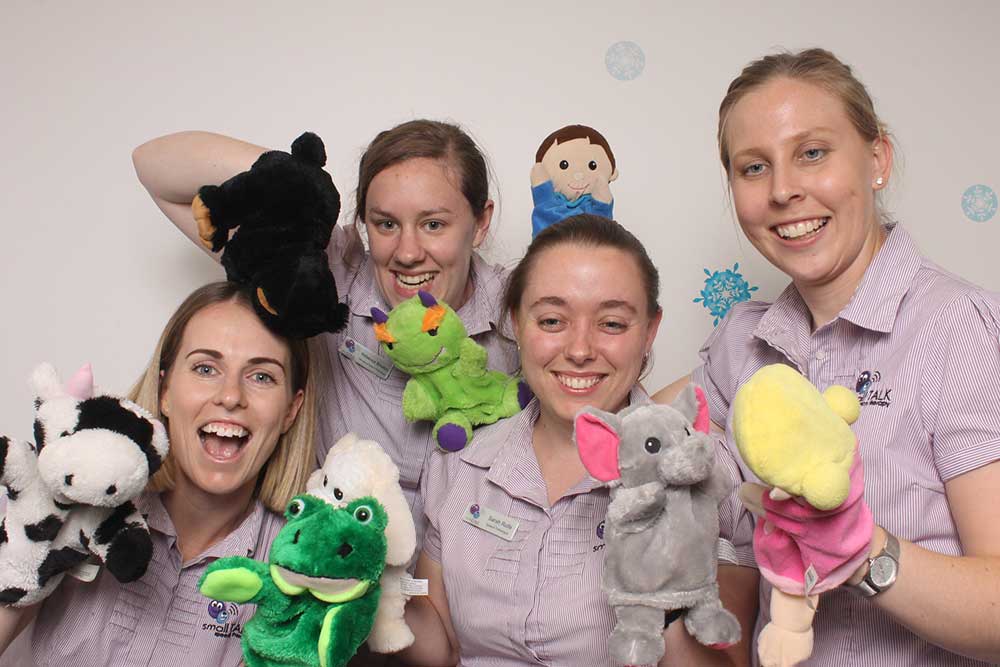
Puppets are a classic toy, loved by both children and adults. Whether your child uses ‘traditional’ puppets, or ‘digital’ (app-based) puppets, there are many language opportunities that this kind of play can provide for building your child’s language skills.
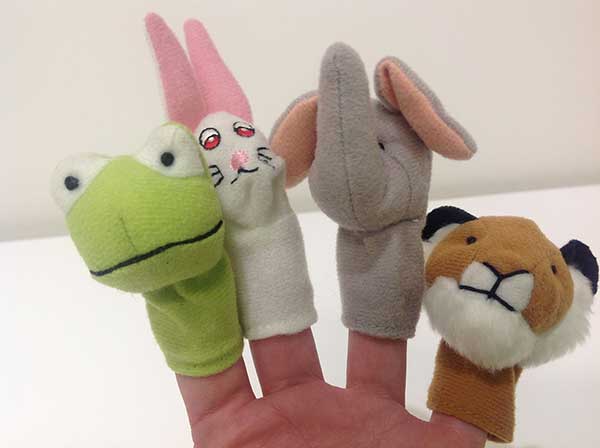
Having your child create their own story, or help to create one, is a great opportunity to practice their storytelling skills. This can help them to develop their imaginative play skills, and for older children can be a good introduction to the parts of a story – introduction, problem, solution and conclusion.
Acting out dialogue for puppets is a great way to practice a range of greetings and farewells without making your child feel like they are in the spotlight. Help your child to think about what the characters should say or do when a new puppet enters the scene – some suggestions might be saying “hi”, asking “how are you?” or asking “what are you playing with?”.
Pretending to be different characters is also a good way to practice asking and answering a range of “wh” questions, such as “who are you?”, “what are you doing?”, “where should we go next?” or “what happened?”
For younger children, having toys or puppets complete a range of different actions is a great introduction to verbs, or action words. Have your puppet complete some actions, and have your child name the actions. Or have your child name some actions that he/she wants the puppet to complete. Try: jumping, eating, drinking, running, sleeping and hiding.
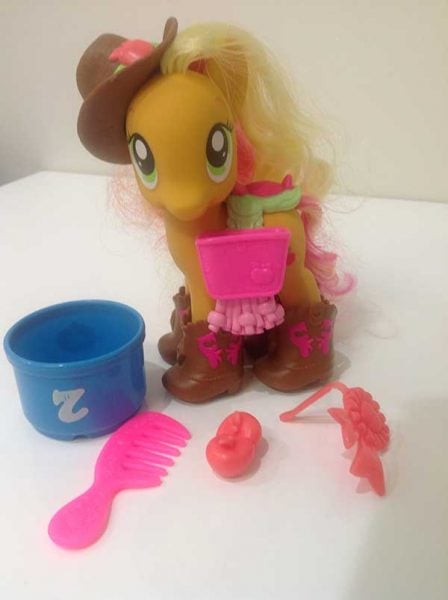
Because puppet play provides lots of chances to practice different word types – such as names, action words and places, this activity is a good opportunity to show your child how these words can join together to form sentences, such as “the frog is jumping in the pond”, “bear is eating”.
For older children, add new word types, such as pronouns (he/she/they), describing words (such as red, green, sad, old, young, tired, happy) and prepositions (such as in, on, under, next to, between) to your sentences.
Ask your child to recount what happened in the story to practice their ability to retell stories in the correct order. Help your child by asking them “before” and “after” questions (such as “what happened after the pirate found the treasure?” or “what happened before he opened the chest?”), or help them by using the words “first”, “next” and “last” to describe the story. For example, “first he found the treasure map, then he followed the directions and dug up the treasure. Then he opened the chest and it was full of lollies!”
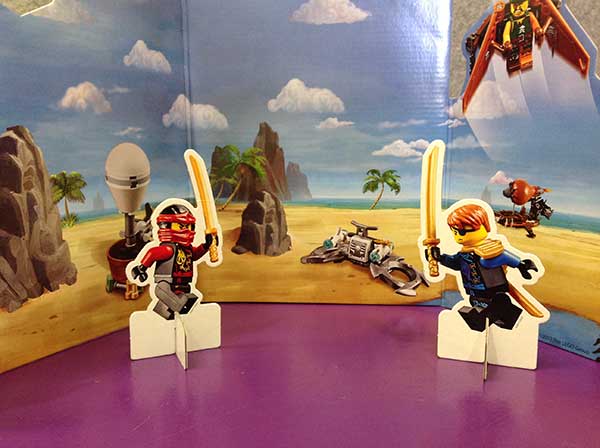
Choose names for characters and places that match up with the sound your child is working on in speech sessions. For example, if your child is working on the ‘s’ sound, you could choose a name such as “Sam” or “Sophie” for your puppet, or have the story take place in “space”. Choosing key words that use the target sound will give your child lots of opportunities to practice the sound when they are making sentences for their story. Ask your speech therapist for word ideas to match the sounds you are working on.
Try creating your own background for the show, or making your own puppets to practice following directions. For example, “draw a sandcastle at the beach!” or “before you glue the eyes on, draw a mouth!”
For older children, or those working on social skills, making a puppet show as a small group is a great way to work on teamwork skills, such as listening to others, taking turns, and working as a group.
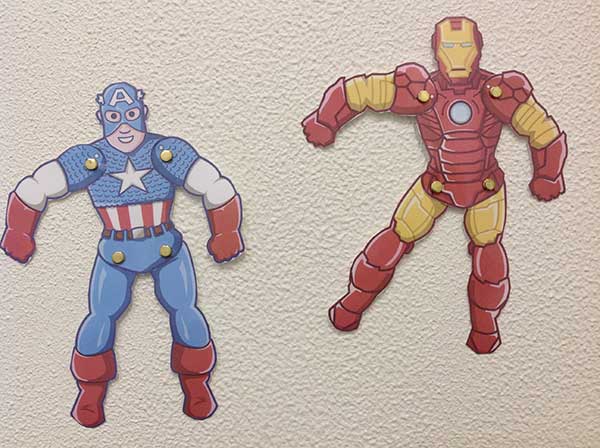
These strategies work just as well with ordinary toys. Or you can have a go at making your own puppets, using socks or paper, or using iPad APP Sock Puppets.